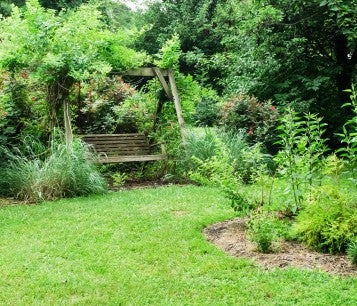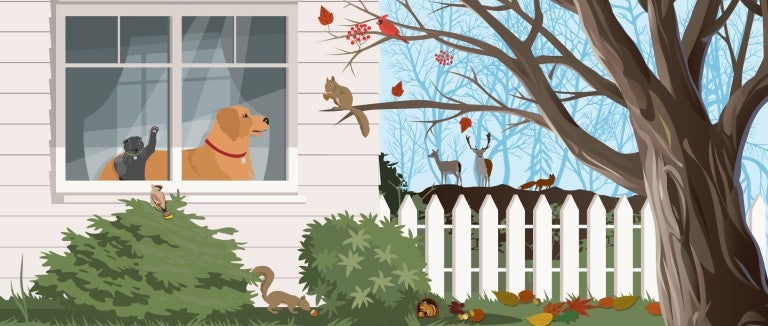Somewhere toward the end of the last ice age, we formed an alliance with wolves: Maybe the ancestors of dogs got food scraps while our own ancestors gained protection from predators and other humans. These social species eventually collaborated on a vast scale, possibly even hunting woolly mammoths together.
A humane backyard is a natural habitat offering wildlife plenty of food, water and cover, plus a safe place to live free from pesticides, chemicals, free-roaming pets, inhumane practices and other threats. And it's so easy to build!

Being a friend to animals means considering not just our pets and the wild animals we cherish, but also those who have little to no perceived value or legal protection. In many states, groundhogs can be killed all year, as can coyotes and other animals viewed as “pests,” with no limits on the numbers. Open seasons on raccoons, skunks and opossums often last for many months. Add other forms of human destruction—pesticides, habitat removal—and it’s a wonder these animals have anywhere left to go where they are not under constant stress. The least we can do is avoid unleashing our dogs on them, too. Here are some steps to keep both dogs and wildlife safe.

Don’t rely solely on fences. Fencing inhibits quick escapes—a lesson we learned when our dog cornered an opossum at midnight. Thankfully my husband intervened in time, but that was the end of those late-night leashless walks. Especially at night and at dawn, when wildlife are most likely to be out, six-foot leads can help prevent conflict.

Create structure. We all thrive on routines, and dogs aren’t the only smart animals in our environs. Squirrels, deer, rabbits and many others take note of times and places that appear safest. Take your dog out around the same times every day when possible, and create pathways she can follow.

Learn who shares your space. Do you have a persimmon tree where an opossum eats fruit in autumn? A potting bench that a skunk hides behind? A shed where foxes are raising their kits below? Your dog will sniff them out even if you don’t. Learning the habits of wild animals will help you give them the space they need.

Keep an eye out. A dog’s obsession with a certain spot in the spring, for example, might indicate a pending attack on a rabbit nest. Armed with this knowledge, you can pull her away, add a temporary barrier that allows rabbits to come and go but prevents dog access, and leash your dog until the rabbits have grown. When you see dogs harassing wildlife, you can also redirect their instincts, making noise and offering treats to distract them.

Remove concentrated attractants. Bird feeding leads to some of the most preventable and sometimes devastating conflicts between humans and wild mammals. It can also make wildlife more vulnerable by attracting them in large numbers to the same spot. Birds find far more food and shelter in native plantings anyway, so I encourage people to create habitat that helps all animals and diffuses their presence across landscapes. (Extra bonus: Wildlife gardens offer the best Cat TV for our indoor feline friends!)
Being a friend to animals means considering not just our pets and the wild animals we cherish, but also those who have little to no perceived value or legal protection.
Most of all, remember that just because dogs were originally trained to hunt wildlife doesn’t mean they can’t be retrained, or at least redirected, now. Terriers may have once been “ratters,” but my neighbor would no sooner expect him to catch rats than woolly mammoths. Rather than allowing pets to terrorize groundhogs and black rat snakes (who actually are ratters), why not think of them as partners in a new endeavor, one that forges a more peaceful coexistence?
Want more content like this?
This was written and produced by the team behind All Animals, our award-winning magazine. Each issue is packed with inspiring stories about how we are changing the world for animals together.
Learn MoreSubscribe

